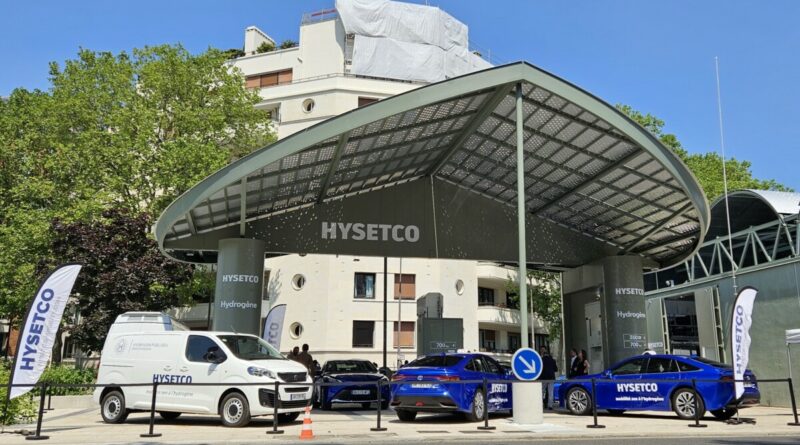
Strengthening hydrogen infrastructure to support the green energy transition
The growing frequency and intensity of climate change-related events highlight the urgent need for decarbonisation. Electrification is a key tool in this transition, with electricity projected, according to all prospective models, to account for 50 – 60% of the final energy consumption by 2050. So, to achieve full decarbonisation, renewable heat and renewable gases (including hydrogen) must be mobilised to address the remaining 40 – 50%. Hydrogen is expected to play a critical role, contributing to 10 – 20% of the final energy consumption by 2050. In that respect renewable and low carbon hydrogen is a cornerstone of the EU’s Net Zero Strategy. Hydrogen will serve two primary functions: To decarbonise “hard to abate” sectors i.e. sectors where electrification of processes is difficult or impossible, for instance sectors using hydrogen as a feedstock: production of ammonia, chemical industry or steel industry where hydrogen could replace coke to produce iron.
Hydrogen is also necessary to decarbonise transport sector, intensive or heavyduty mobility (where there is a need for large autonomy or short refuelling time) and for maritime and aviation mobility with hydrogen or hydrogen derivatives such as ammonia, methanol or e-kerosene.
Another very important role of hydrogen will be to contribute to integrate renewable energies within energy systems. Hydrogen can provide flexibility to address the variability of wind and solar energies. So, beyond the historical role of hydrogen as a chemical product, the role of hydrogen as an energy vector either to transport or to store energy will be more and more confirmed. Hydrogen will progressively acquire the status of a commodity and similarly to electricity or natural gas today, a market for renewable or low carbon hydrogen will emerge.
The need for a robust hydrogen infrastructure
For hydrogen to establish itself as a viable market, infrastructure development at national, European and world scale is paramount (as today for electricity or natural gas markets). Regulation 2022/869 on guidelines for trans-European energy infrastructure (May 30, 2022) defines hydrogen infrastructure as encompassing pipelines, storage facilities, reception, storage and delivery terminals for hydrogen and hydrogen derivatives (ammonia, methanol, LOHC, etc…) and transport-related installations such as hydrogen refuelling stations. In the field of pipeline system, significant progress has already been made by natural gas TSO (Transmission System Operators).
The European Hydrogen Backbone (EHB) Initiative spearheaded by 33 European gas TSO, envisions a 58,000 kilometres network by 2040 connecting H2 production sites, storage facilities, terminals and consumers.
60% will come from repurposed natural gas pipelines alongside with new constructions (40%), offering cost-effective hydrogen transport (0,10 up to 0,25 €/kg per 1,000 km depending on pipe size and type – repurposed or new). This vision is already turning into action. The Netherlands has initiated a national backbone. Through a specific law, Wasserstoffbeschleunigungsgesetz, the German government is providing support to a core network, the “Kernnetz”, of roughly 9,000 kilometres by 2032. Enagas, the Spanish TSO, has recently committed €3,13 billion by 2030 for 2,700 kilometres of pipe and two underground storage facilities as a first step of the Spanish hydrogen backbone. France’s NaTran (ex GRTgaz) is developing interconnections with neighbouring countries including the MosaHYc Project (100 km) between France and Germany, RHYn project (100 km) in Alsace with connections with Germany and Switzerland, HY-FEN between Fos-Marseille and the German border and HYnframed, a H2 network in the South region. By 15. February 2024 the EU Commission has approved a third Important Project of Common European Interest (IPCEI) to support H2 infrastructure (Hy2Infra) 1. This IPCEI is expected to boost the development of an H2 infrastructure by supporting development of new or repurposed hydrogen transmission and distribution pipelines, large-scale storage facilities, construction of handling terminals and deployment of 3.2 GW of large-scale electrolysers. On 30. January 2025, the EU Commission allocated almost €1,25 billion in grants from the Connecting Europe Facility (CEF)2. Part of this amount (€250 million) will be allocated to 21 development studies for projects in many European countries, for backbone projects in Italy, Portugal and Spain and for the BarMarH2MED Project (€28 million). On 10. February 2025 the H2-MED Alliance (Enagas, NaTran, OGE, REN and TeReGa) received expression of interest from 168 companies covering 528 projects. By 2030 1,6 million tonnes of hydrogen are expected to be exported from Spain to Germany via BarMar and HY-FEN pipes, increasing to 2.4 Mt by 2040.
The partners are now developing the feasibility study. In parallel many challenges have to be overcome: contracting i.e. long term booking agreements, funding especially public financial support and a clear regulatory framework in order to de-risk the project.
In the field of storage some projects are being developed in France (Hypster project), in Spain, in Austria and in Germany. 13 storage operators coordinate within the “H2eart for Europe” Alliance (www.h2eart.eu). At the European level the FrHyGe project involves 17 partners (Storengy, Enagas, Geostock and many others). With a total budget of €43 million, 20 of which are funded by CHP (Clean Hydrogen Partnership), FrHyGe is dedicated to validating large scale underground hydrogen storage in salt caverns (Manosque in France and Harsefeld in Germany). As an order of magnitude, a salt cavern (in Manosque, Etrez or Harsefeld for instance) can store 5000 up to 6000 tonnes of hydrogen which represents approximately 250 GWh (to be compared to battery storages presently developed: 200 up to 400 MWh). In the field of transport, the “chicken and egg” dilemma should be solved by developing a refuelling infrastructure. The Alternative Fuel Infrastructure Facility (AFIF) is an effective and efficient instrument to support the rollout of such infrastructure. Beyond this minimal infrastructure it will be necessary to build a sufficient number of hydrogen refuelling stations in order to accompany the ramp-up of the heavy duty and intensive mobility and to give a necessary comfort to the users. It is one of the preconditions for the uptake of hydrogen vehicles. As far as storage and delivery facilities for hydrogen and hydrogen derivatives are concerned, some projects are already ongoing: Air Liquide project Enhance in Antwerp (an ammonia cracking facility with a subsidy of €110 million from the EU), Air Products in Le Havre, Hamburg and Rotterdam for receiving and cracking ammonia, studies for ammonia reception facility terminals in Brunsbüttel and in Antwerp (financed by CEF).
A January 2025 study3 by Trinomics, ARTELYS and LBST for the EU Commission estimated the investment needs until 2040 for a pan-European energy infrastructure: almost €170 billion between 2024 and 2040.
Majority of these investments are dedicated to H2 pipelines (€105 billion) while storage facilities amounting to €27 billion, import terminals to €20 billion and electrolysers to €16 billion. 53% of these investments would develop in Germany, France and the Netherlands. To foster the development of such infrastructure, a favourable framework must be established, and some conditions need to be set up to give visibility to all players.
Regulatory Certainty and Streamlined Permitting
› To ensure a real technological neutrality in clean hydrogen production: from renewable and nuclear electricity, from fossil fuels with CCS and from biomass.
› As implementation of hydrogen infrastructure require a lot of time, speeding up the permitting processes will help to reduce the overall project timelines and costs.
› To implement the “Hydrogen and Gas Directive” in respective national legislations: to define the body in charge of regulating the H2 infrastructure, to certify specific operators as H2 Transmission Network Operators in order them to be member of the ENNOH (European Network of Network Operators for Hydrogen), to define rules for storage and reception terminal operators.
Financing and investment de-risking
Some steps were already achieved through IPCEI (Hy2Infra) and through the Connecting Europe Facility. As explained before an appropriate H2 infrastructure is a prerequisite for the development of the hydrogen market. This requires an immediate and robust support and strong contributions from public bodies such as European Investment Bank (EIB) and the future Industrial Decarbonisation Bank and tools to de-risk investment. Such de-risking mechanisms are already in place in Germany and Netherlands.
To accelerate the hydrogen ecosystem take-off and to unlock large scale projects, mobilizing private funds is necessary. One of the largest funds, “Clean H2 Infra Fund” is managed by Hy24 a 50/50 JV between ARDIAN and FiveTHydrogen and has already invested in Hy2Gen AG, in Green Steel (Sweden), in Elyse Energy and in HySetCo the company enabling hydrogen mobility with taxis and refuelling stations in Paris’ region. Conclusion, a critical pivotal moment. Implementation of hydrogen technologies is progressing at slower pace than most of the analysts, companies and governments predicted it five years ago. To fight climate change there is no time to stop but rather to accelerate and to scale up. In that respect a well-developed hydrogen infrastructure is crucial for setting up a hydrogen market. It is necessary to decarbonise “hard-to-electrify” sectors in the economy, to balance the variability of renewable energy and to ensure energy security and supply diversification and then contribute to independence and sovereignty. Given the long lead times for infrastructure deployment, immediate and coordinated planning involving all stakeholders is essential. Establishing a clear regulatory framework, securing robust financial support, and accelerating project execution will be key to unlocking hydrogen’s full potential in the green energy transition.
___________________________________________________
1 https://ec.europa.eu/commission/ presscorner/detail/en/ip_24_789
2 https://ec.europa.eu/commission/ presscorner/detail/en/ip_25_377




